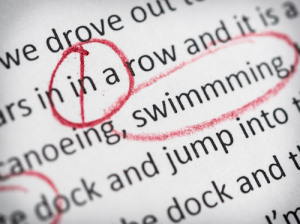Editing vs. Proofreading – The Great Debate
The differences between editing and proofreading has been an ongoing debate among writers, editors, and proofreaders for decades. While both editing and proofreading have vital roles in the content development process, they actually occur at different stages in the content development process. They also focus on different aspects of the content and use different techniques to achieve the goals.
However, because the differences between editing and proofreading aren’t very clear to many people, they often don’t know what to hire when developing content – an editor, a proofreader, or both.
Editing
The editing process typically occurs after the first draft of content is complete. The goal of the editing process is to make changes and recommendations to improve the overall quality and flow of the content.
Editors should keep in mind the following when editing content:
- Have the proper words been chosen?
- Has a passive voice, active voice, or both been used?
- Are too many words used to express what is trying to be communicated?
- Is their consistency throughout the content (e.g. formal or informal style)?
- Does the content need an introduction and conclusion?
- Are the paragraphs in a logical sequence?
- Is it clear what each pronoun (he, she, it, they, which, who, this, etc.) refers to?
- Is there any terminology that might be unclear to readers?
- Is there any ambiguity that needs to be clarified?
Proofreading
The proofreading process occurs after the editing process, as the final draft of content is what needs to be proofread. The goal of the proofreading process is to correct grammar, spelling, punctuation, and other language errors. It is very easy to have great content but if it contains errors, it will look unprofessional and be difficult for people to read.
Proofreaders should keep in mind the following when proofreading content:
- Are there any spelling errors?
- Are commas, colons, semicolons, etc., used correctly?
- Have words that sound like one another but have different meanings, such as there, their and they’re, been used correctly?
- Have quotation marks and apostrophes been used appropriately?
- Are there any double spaces, particularly after full stops?
When proofreading content, do not rely on spelling and grammar checkers – they don’t catch everything and sometimes make incorrect changes and recommendations.
If possible, have someone else edit and proofread your content. It can be difficult to edit and proofread your own work and catch mistakes – you may have read the content so many times that errors might not be noticeable.
The content development process does take time but definitely pays off in the end when your content is published.

